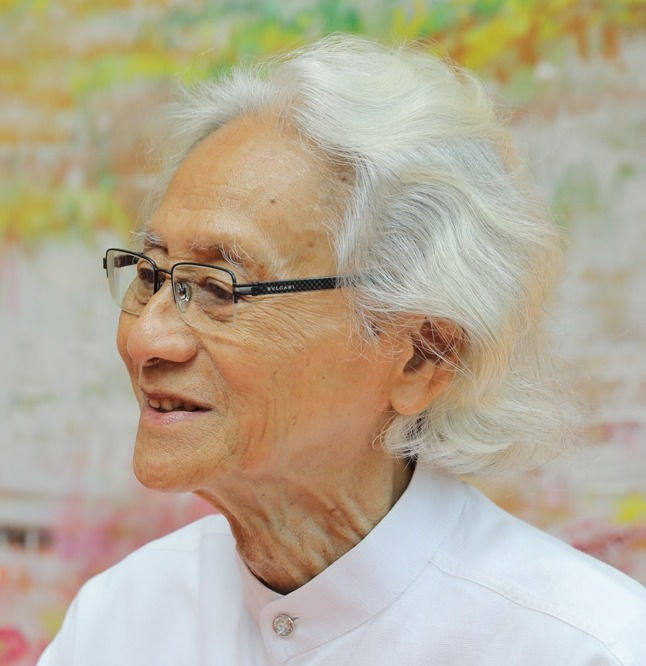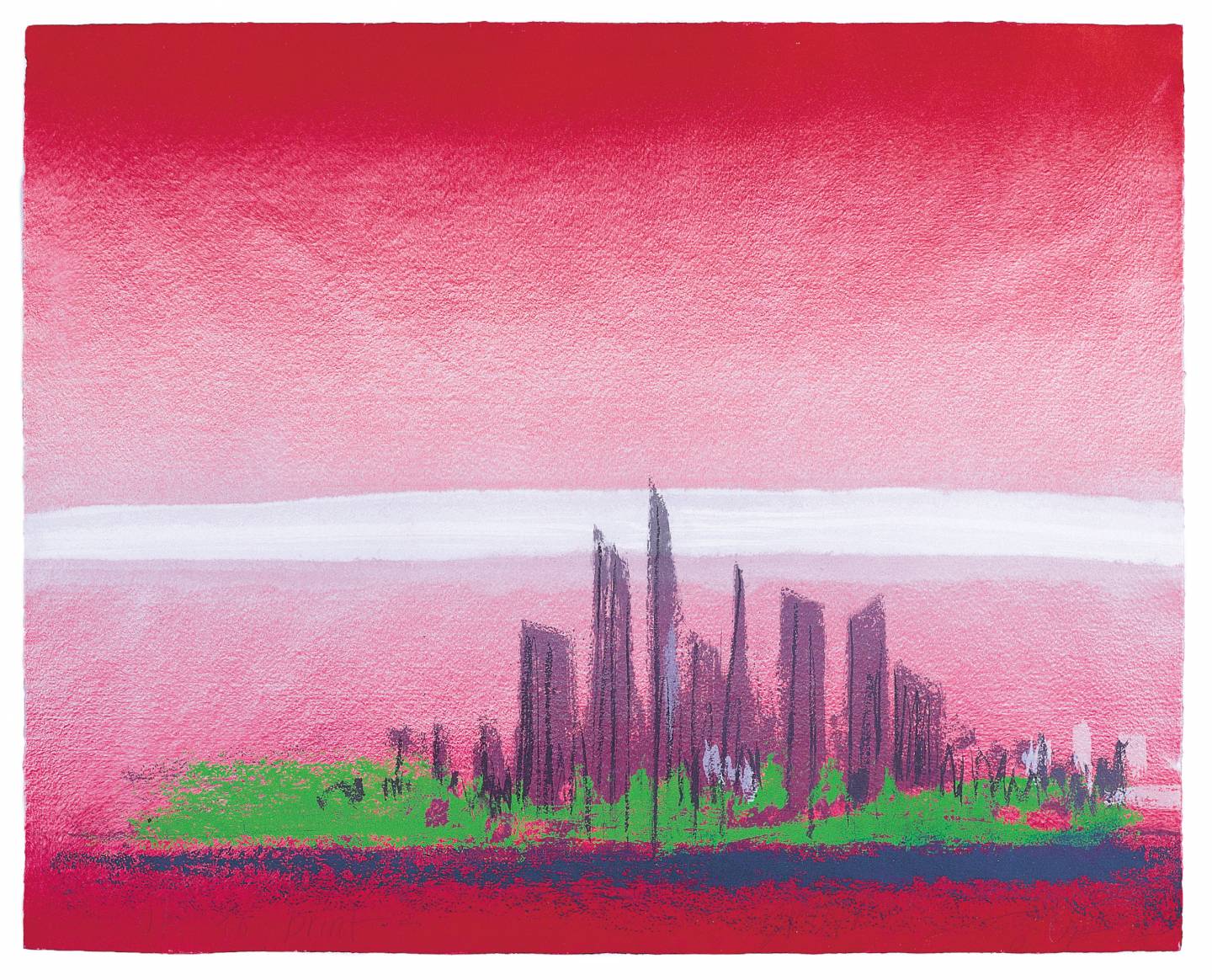
Srihadi Soedarsono
Kanjeng Raden Haryo Tumenggung H. Srihadi Soedarsono Adhikoesoemo was a prominent Indonesian modernist painter and a respected tenured lecturer. Soedarsono was a celebrated figure in the post-independence avant-garde art movement. His art frequently delved into traditional Javanese cultural themes, such as dancers and the Borobudur temple, as well as landscapes. Additionally, he ventured into the realm of abstract painting.
Biography of Srihadi Soedarsono
Srihadi Soedarsono was born in 1931 in Surakarta (Solo), Central Java. From 1945 to 1948, Soedarsono served as a member of the Student Army, where he contributed as a painter-journalist, creating posters for the Information Center Division IV BKR/TKR/TNI in Solo.
Between 1947 and 1952, Soedarsono was actively involved with the Young Indonesian Artists in Solo and Yogyakarta. He also played a crucial role in the formation of the Surakarta Cultural Association, which originated in Solo in 1950.
Srihadi actively exhibited his artwork in both Solo and Yogyakarta.
In 1952, he embarked on his artistic education at the Painters Education Center within the Faculty of Engineering at the University of Indonesia in Bandung (which is now part of the Faculty of Fine Arts at Bandung Institute of Technology). During this period, he studied under the Dutch cubist painter Ries Mulder.
In 1960, Srihadi was granted a scholarship from the ICA (Institute of Contemporary Arts) to pursue further studies in the United States. He continued his education at Ohio State University, where he earned his master's degree in art in 1962.
Soedarsono was married to Dra Siti Farida Nawawi, and they were blessed with two daughters and one son. He passed away in 2022 at the age of 90.
Srihadi Soedarsono's art style
In his artwork, he captures the essence of nature and redefines the landscape through a dynamic display of vivid hues. He conveys the majestic presence of the topography, establishing a profound connection with his physical environment. Each of his works exudes an underlying energy, marked by bold splashes of color. In his seascapes, he masterfully unifies the elements of land, water, and sky, creating a sense of spiritual harmony within his oeuvre. Soedarsono's landscapes and seascapes are celebrated for their simplicity, characterized by a seemingly straightforward approach: the horizontal juxtaposition of two or three distinctly defined color fields, representing the dialectical encounter between earth and sky or sea and sky.

In his paintings that pay tribute to classical Indonesian dance, he skillfully captures the innate beauty and essence of his subjects. With great acuity, he conveys the spirit and movements of the dancers, reflecting an intuitive understanding gained through close observation and intense study. He meticulously depicts the traditional, iconic costumes with fidelity and precision, down to their embellishments and expressions.
During his youth, Srihadi was revered as an illustrator for resistance posters, reflecting his early involvement in the Indonesian fight for independence. Following Indonesia's liberation from the Netherlands in 1949, a localized government emerged, favoring Indo-specific aesthetics as a reaction against the dominant European aesthetics in the local art scene. Srihadi's use of vibrant colors, prioritizing them over figures, contrasted with the new artistic policies and was seen as excessively Western, causing concern among political leaders.
Awards and Honors
Srihadi Soedarsono received several prestigious awards and recognitions throughout his illustrious career, including:
- The Arts Award from the Government of the Republic of Indonesia in 1971;
- A Cultural Award from the Government of Australia in 1973;
- A Fulbright Grant from the United States Government in 1979.
His exceptional artwork is featured in the collections of renowned institutions and galleries worldwide, including:
- The National Museum of Indonesia;
- The National Gallery of Indonesia;
- The State Palace Collection in Jakarta;
- The United Nations in New York;
- The Museum of Modern Art in Rio de Janeiro;
- The Ohio State University;
- Fordham University in the United States;
- The private Neka Museum in Bali.
Furthermore, his works are highly coveted by private collectors who recognize the profound impact and artistic brilliance of his creations.
Years:
Born in 1931
Country:
Indonesia, Solo
Gallery: